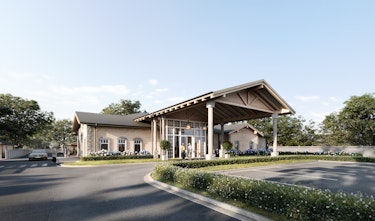The marketing mix is a foundational concept in marketing that outlines the various tactics and strategies businesses use to promote and sell their products or services. Traditionally, the marketing mix is composed of the 4Ps: Product, Price, Place, and Promotion. However, in the context of real estate development, these elements are often adapted to meet the unique challenges and opportunities of the industry. Furthermore, with the advent of digital technology, the way these elements are implemented has significantly evolved, leading to a distinction between traditional and digital approaches to the marketing mix in real estate development.

The Traditional Marketing Mix in Real Estate Development
Product
In real estate development, the "product" refers not just to the physical properties being sold or leased but also to the lifestyle and benefits that these properties offer. Traditionally, developers have emphasized the quality of construction, location, amenities, and the prestige of their developments as key product attributes. High-quality brochures, model units, and open houses were used to showcase these attributes to potential buyers.
Price
Pricing in traditional real estate development has often involved a combination of cost-plus pricing and competitive analysis. Developers would calculate the cost of land acquisition, construction, marketing, and add a profit margin to arrive at a selling price. Additionally, pricing strategies would consider the prices of similar properties in the area to remain competitive while also maximizing profit.
Place
The "place" component traditionally focused on the physical location of the property and its distribution channels. This meant the accessibility of the location, its proximity to key amenities, and the desirability of the neighbourhood. Sales galleries and real estate agents played crucial roles in connecting buyers with properties, serving as the primary distribution channels.
Promotion
Traditional promotional strategies in real estate development included print advertisements in newspapers and magazines, billboards, direct mail campaigns, and television and radio commercials. These methods aimed to reach a broad audience and generate interest among potential buyers. Public relations events, such as ground-breaking ceremonies and community sponsorships, were also used to enhance the visibility and reputation of the development projects.

Traditional vs. Digital: A Complementary Approach
While digital marketing offers numerous advantages in terms of reach, cost-effectiveness, and measurability, traditional marketing methods continue to play a vital role in real estate development. The tactile experience of visiting a model unit or the impact of a well-placed billboard can complement digital strategies, providing a more holistic marketing approach.
Incorporating both traditional and digital elements allows developers to leverage the strengths of each method. For instance, a mixed-use development might use digital channels to target young professionals looking for urban living options while employing traditional methods to attract retail tenants and local businesses.
The intersection of traditional and digital marketing strategies in real estate development not only reflects the evolution of marketing tools but also signifies a shift in consumer behaviour and market dynamics. This expansion delves deeper into how these strategies are being refined and integrated, offering a nuanced perspective on their application in a rapidly changing landscape.

Deeper Integration of Digital Tools
The advent of digital tools has introduced a level of precision and personalization previously unattainable through traditional methods alone. For instance, CRM (Customer Relationship Management) systems enable developers to maintain detailed profiles of potential buyers, tracking their interactions, preferences, and feedback across digital platforms. This information allows for highly personalized marketing communications, targeting individuals with specific messages about properties that match their interests and needs.
Moreover, advancements in data analytics and AI are enabling more sophisticated market segmentation and targeting strategies. Developers can use these tools to identify and focus on high-potential market segments, predicting buying patterns and preferences with a high degree of accuracy. This level of insight is transforming promotional strategies, allowing for more efficient allocation of marketing resources and higher conversion rates.

Enhanced Customer Experience Through Digital Engagement
Digital platforms have also transformed the customer journey in real estate development, offering numerous touchpoints for engagement. Social media platforms, for example, allow for real-time interaction with potential buyers, providing a platform for answering questions, sharing updates, and building a community around a development project. This ongoing engagement helps maintain interest and momentum throughout the development phase, even before the physical product is available for viewing.
Interactive tools like virtual and augmented reality tours have taken this a step further, offering an immersive experience that can significantly influence buyer decisions. These tools allow potential buyers to visualize themselves in the space, enhancing emotional connection and investment in the property. Such digital experiences are particularly valuable in reaching remote buyers, who can explore and commit to properties without the need for physical visits.

The Enduring Value of Traditional Strategies
Despite the rise of digital strategies, traditional marketing methods continue to hold significant value in real estate development. The tangible nature of real estate as a product means that physical experiences —l ike visiting a model home or attending a site launch event — remain powerful tools for influencing buyer decisions. These experiences provide sensory information that digital tools cannot fully replicate, such as the feel of materials, the quality of finishes, and the spatial dynamics of a property.
Moreover, traditional media channels still play a crucial role in building brand awareness and reaching segments of the market that are less digitally engaged. For example, older demographics, who may not be as active online but hold significant buying power in the real estate market, can be more effectively reached through traditional channels like print media, television, and community events.

The Synergy of Combined Strategies
The most effective real estate marketing strategies recognize the complementary strengths of traditional and digital methods. By integrating these approaches, developers can create a comprehensive marketing mix that reaches a broader audience, engages potential buyers at multiple touchpoints, and offers a richer, more nuanced brand experience.
For example, a developer might use digital tools to generate initial interest and gather leads through targeted online ads, followed by personalized email communications to nurture these leads. At the same time, traditional open houses or exclusive events can be used to convert interest into action, providing a tactile experience that reinforces the digital engagement.

As technology continues to evolve, so too will the marketing mix in real estate development. Emerging technologies like blockchain and the Internet of Things (IoT) are poised to introduce new dimensions to how properties are marketed, sold, and experienced. Blockchain, for instance, could revolutionize property transactions, making them more transparent, secure, and efficient. At the same time, IoT technology in smart homes can be leveraged in marketing campaigns, highlighting cutting-edge features and attracting tech-savvy buyers.
In conclusion, the integration of traditional and digital marketing strategies in real estate development is not just a response to technological advancements but a strategic approach to meeting the changing needs and behaviours of the market. As developers navigate this complex landscape, the ability to adapt and innovate in their marketing mix will be crucial to capturing the attention and loyalty of modern buyers.
